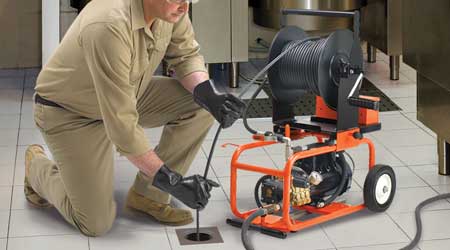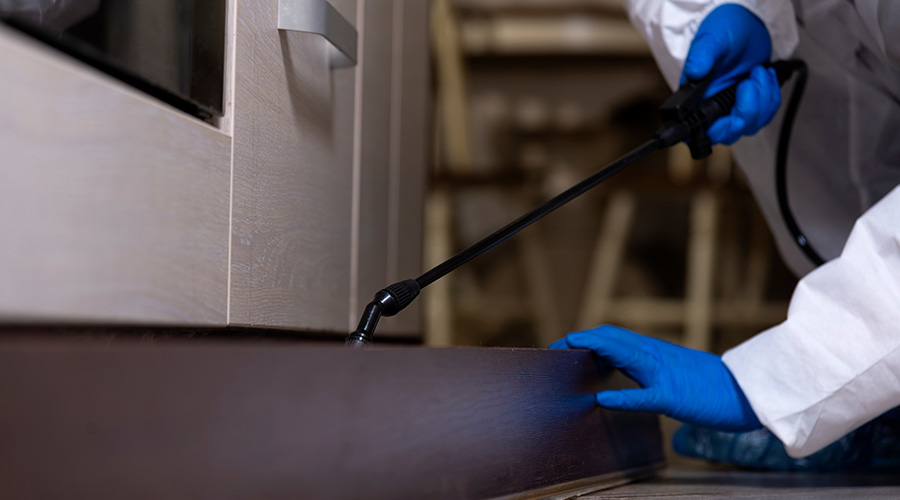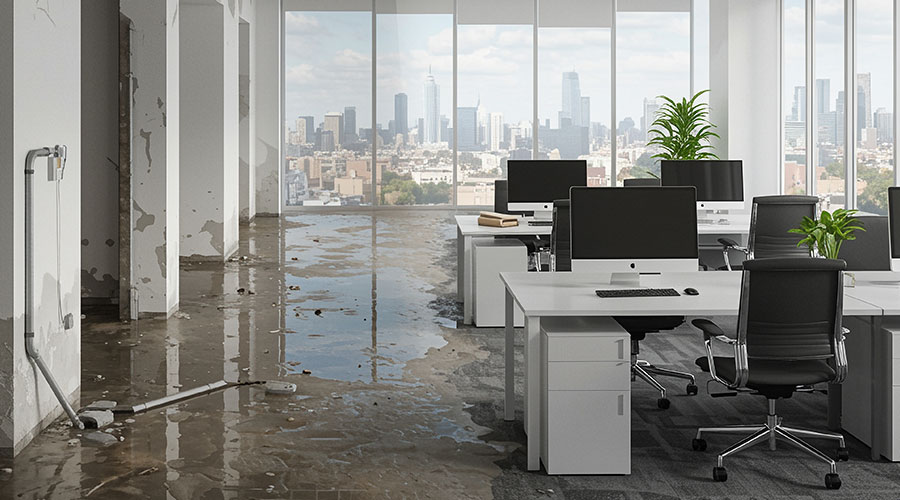Understanding Types of Drain Cleaning Equipment
An array of equipment options gives technicians the power to locate, diagnose and remove blockages from drains and piping.
1. Auger cleaners
There are two different types of auger or snake cleaners – hand-powered and motor-driven. Both types use a long, flexible cable that the user feeds through the drain opening to the clog. A corkscrew on the end of the cable cuts into the clog to break it up or to allow it to be extracted. One of the major advantages of this equipment is the ability to physically remove blockages that chemical cleaners cannot dissolve or break up.
Hand-driven augers include a canister the operator turns to drive the corkscrew into the clog. Most have an effective range of 25 feet. Their power is governed by the strength of the operator. They are most effective for use in sinks, showers, toilets and other applications with small-diameter piping.
Motor-driven augers come in a range of sizes, from handheld units to truck-mounted units. They operate the same as handheld augers with an effective range of up to several hundred feet. Smaller units are effective in applications with small-diameter piping, while technicians can use larger units effectively in piping sizes ranging up to those found in main sewers.
2. Air-burst cleaners
Air-burst drain cleaners use air, carbon dioxide or other gas to disintegrate or dislodge a clog. The unit directs the pressurized gas into the piping, where it directs a force through the standing water at the clog. Units are available that use small, built-in compressors or carbon dioxide cartridges to produce the initial burst of gas pressure.
One primary advantage of air-burst cleaners is their ability to quickly clear clogs. Chemical cleaners typically take time to attack the blockage, sometimes requiring several hours. They are most effective in drain lines filled with water and can reach blockages located some distance down the piping. Their main drawbacks are that they are not as effective in applications where the piping is dry or in large-diameter piping, such as main sewer lines.
3. Hydro-jetting cleaners
Hydro-jetting drain cleaners use high-pressure water streams to break up clogs. The technician feeds a hosepipe fitted with a nozzle into the drain. High-pressure water pumped into the hose is forced out through the nozzle. With pressures as high as 35,000 psi, the energy from the water is effective in clearing blockages. Unlike most other drain cleaners, hydro-jetting cleaners can be used on long drain pipes, limited only by the length of the hosepipe. They also are effective on most common blockages, whether organic or inorganic
In addition to being able to clear blockages, these cleaners can effectively remove most contaminants, including grease and oils, from the interior of a pipe. This feature makes them effective preventive maintenance tools. Drain lines routinely exposed to potentially clogging contaminants can be hydro-jetted regularly, eliminating the conditions within the pipe that tend to lead to clogs.
One version of the hydro-jetting cleaner, known as the pulse jetter, operates similarly but uses pressure pulses to break up the blockages in the pipe.
Video inspection
Sometimes technicians run into the situation of recurring clogs in a drain line. They clean the drain and take steps to limit the quantity and types of waste introduced into the drain. Still, the drain clogs again. While routine scheduled cleaning of the line can prevent clogs and the resulting flooding, a better solution is to find the cause of the blockages and take steps to correct it once and for all.
The arrival of video camera technology in drain cleaning equipment provides maintenance personnel with an effective diagnostic tool for pipe inspections to help them identify causes of recurring blockages and other problem areas.
The system consists of a high-resolution video camera mounted on a flexible rod that a technician inserts into the drain. The camera records images, enabling technicians to identify the location and makeup of an issue in an otherwise inaccessible area without having to open the piping or dig it up. In addition to identifying the location and cause for pipe clogs, video camera pipe inspections enables technicians to identify the location of pipe breaks and leaks.
The most effective tactic for avoiding issues with clogged drains and piping is to be proactive. Managers and technicians can encourage building occupants and visitors to properly dispose of solid waste, not just dump it down the closest building drain. They also can make certain that all grease receptors are cleaned and inspected regularly.
Technicians also should regularly inspect roof drains to ensure grates are in place and free of leaves and other debris. For drains that serve commercial kitchens, managers can schedule regular drain cleanings to avoid costly blockages and backups.
Related Topics:














